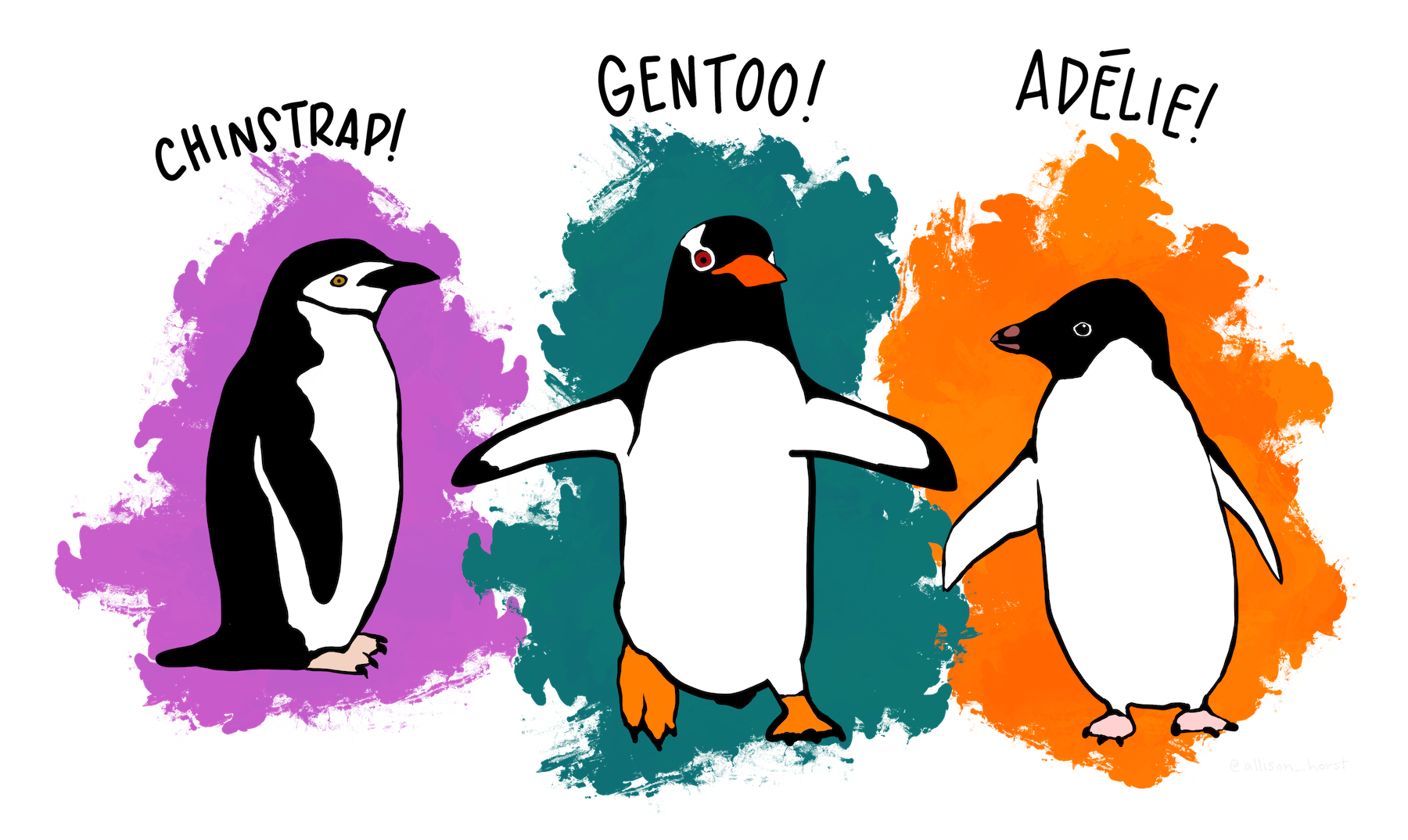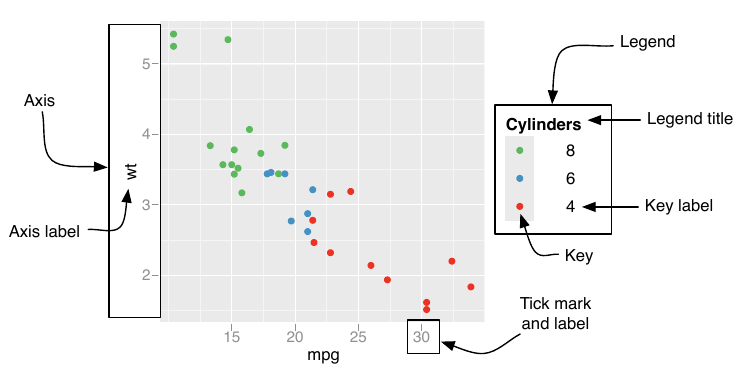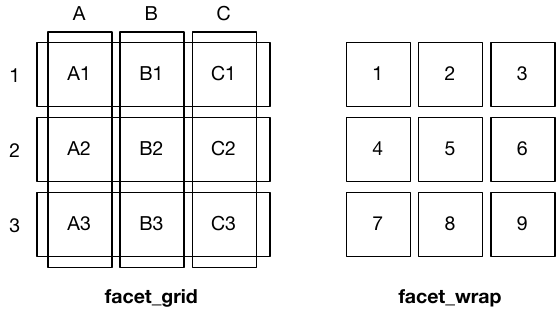
Understanding the foundations of ‘ggplot2’
CCT Data Science ggplot2 series
In Part 1 of this series, we will:
Explore the grammar of graphics
Map data to aesthetics
Understand layer components
Interpret
ggplot2documentationCreate a layered plot
Introduce function and syntax of visual elements
The grammar of graphics
What is a grammar?
“The fundamental principles or rules of an art or science” - Oxford English Dictionary
reveal composition of complicated graphics
strong foundation for understanding a range of graphics
guide for well-formed or correct graphics
Note
See “The Grammar of Graphics” by Leland Wilkinson (2005) and “A Layered Grammar of Graphics” by Hadley Wickham (2010)
Layered grammar of graphics

ggplot2 builds complex plots iteratively, one layer at a time.
What are the necessary components of a plot?
What are necessary components of a layer?
Components of a plot


A plot contains:
Data and aesthetic mapping
Layer(s) containing geometric object(s) and statistical transformation(s)
Scales
Coordinate system
(Optional) facets or themes
Components of a layer


A layer contains:
Data with aesthetic mapping
A statistical transformation, or stat
A geometric object, or geom
A position adjustment
Mapping data to aesthetics
What data inputs are needed?
Data can be added to either the entire ggplot object or a particular layer.
Input data must be a dataframe in ‘tidy’ format:
every column is a variable
every row is an observation
every cell is a single value
Note
See “Tidy Data” by Wickham (2014) and the associated vignette
Example dataset - raw
| species | bill_length_mm | bill_depth_mm | body_mass_g |
|---|---|---|---|
| Adelie | 39.1 | 18.7 | 3750 |
| Adelie | 39.5 | 17.4 | 3800 |
| Gentoo | 46.7 | 15.3 | 5200 |
| Gentoo | 43.3 | 13.4 | 4400 |
| Chinstrap | 46.1 | 18.2 | 3250 |
| Chinstrap | 51.3 | 18.2 | 3750 |
Example dataset - mapped
Where to specify aesthetics?
Can be supplied to initial
ggplot()call, in individual layers, or a comboggplot()data and aesthetics are inherited, but can be overridden
Where to specify aesthetics?
Can be supplied to initial
ggplot()call, in individual layers, or a comboggplot()data and aesthetics are inherited, but can be overridden
Inheritance of aesthetics by layers
Inheritance of aesthetics by layers
Mapping aesthetics to constants
Specifying a constant inside aes() with quotes creates a legend on the fly
Customizing layers
Under the hood with layer()
A layer contains:
Data with aesthetic mapping
A statistical transformation, or stat
A geometric object, or geom
A position adjustment
Note
All geom_*() or stat_*() calls are customized shortcuts for the layer() function.
The expediency of defaults
Defining each of the components of a layer or whole graphic can be tiresome
ggplot2has a hierarchy of defaultsSo you can make a graph in 2 lines of code!

The short way and the long way
The short way and the long way

stat_* vs. geom_*
“Every geom has a default statistic, and every statistic has a default geom.” - Wickham (2010)
stat_*transforms the data- By computing or summarizing from original input dataset
- Returns a new dataset that can be mapped to aesthetics
geom_*control the type of plot rendered
Tip
When in doubt, check the documentation
Two ways to plot counts (categorical)
stat_count() and geom_bar() are equivalent
Two ways to plot density (continuous)
stat_density() and geom_density() are not equivalent
When to use which?
In general, use geom_*() unless you are trying to:
A panopoly of layer options!
Track all geom and stat options
Exercise
For each of the following problems, suggest a useful geom:
- Display how a variable has changed over time
- Show the detailed distribution of a single variable
- Focus attention on one portion of a large dataset
- Draw a map
- Label outlying points
Position adjustment options
Position adjustment options
Position adjustments limitations
For example, boxplots and errorbars can’t be stacked.
Exercise
What properties must a geom possess to be stackable?
What properties must a geom possess to be dodgeable?
Code-along exercise
Recreating a layered plot

Exercise
What are the two layers in this plot? What data when into each?
Adjusting visual elements
Scales and guides
Each scale is a function that translate data space (in data units) into aesthetic space (e.g., pixels)
A guide (axis or legend) is the inverse function, that converts visual properties back to data
Scales and guides
Each scale is a function that translate data space (in data units) into aesthetic space (e.g., pixels)
A guide (axis or legend) is the inverse function, that converts visual properties back to data

Are axes and legends equivalent?
Scale specification
Every aesthetic in a plot is associated with exactly one scale.
Scale functions names are made of 3 pieces separated by “_”:
scalethe name of the primary aesthetic (
color,shape,x)the name of the scale (
discrete,continuous,brewer)
What does a coordinate system do?
Coordinate systems have 2 primary roles:
Combine the
xandyposition aesthetics to produce a 2-dimensional position on the plotIn coordination with faceting (optional), draw axes and panel backgrounds
Types of coordinate systems
Linear:
coord_cartesian(): common defaultcoord_flip(): x and y axes flippedcoord_fixed(): fixed aspect ratio
Non-linear:
coord_map()/coord_quickmap()/coord_sf(): map projections,xandybecome longitude and latitudecoord_polar(): polar coordinates,xandybecome angle and radiuscoord_trans(): apply transformations
Faceting
Creates small multiples to show different subsets:
facet_null(): defaultfacet_wrap(): “wraps” a 1d ribbon of panels into 2dfacet_grid(): 2d grid of panels defined by row and column

Keeping points of reference
Exercise
Recreate the figure below. How would you get the gray points to show up on all facets?

Theming
Controls non-data elements of plots (e.g., to match a style guide).
Theme elements specify the non-data elements you can control:
plot.title,legend.positionEach element has an element function to describe its visual properties:
element_text(),element_blank()The
theme()function allows overriding of the default theme:theme(legend.title = element_blank())
Complete themes
Further resources
Penguin artwork by @allison_horst
Hadley Wickham’s “A layered grammar of graphics” (2010)
Hadley Wickham’s “ggplot2: Elegant Graphics for Data Analysis, 3rd edition”, now available online
“R for Data Science”, by Hadley Wickham, Mine Cetinkaya-Rundel, & Garret Grolemund, especially chapters 2, 10, and 12
See us at drop-in hours






















